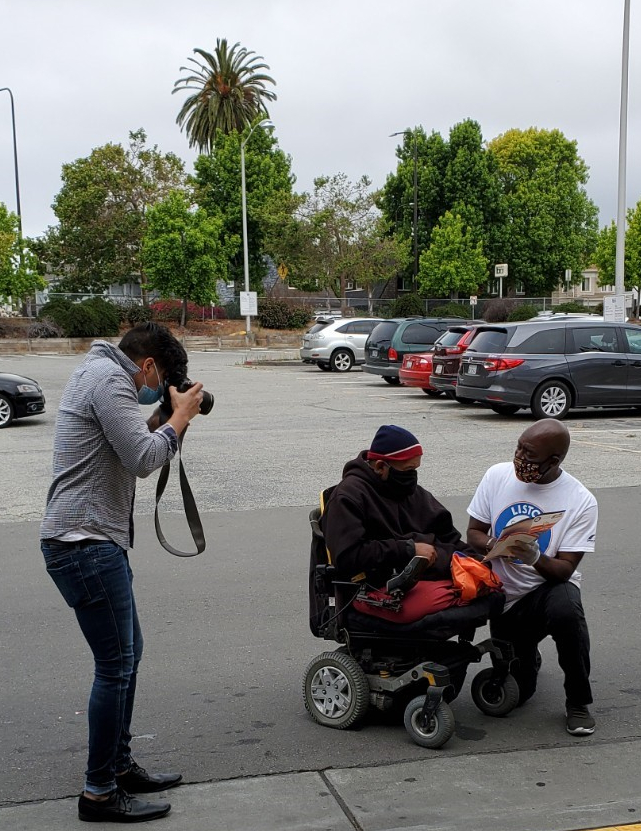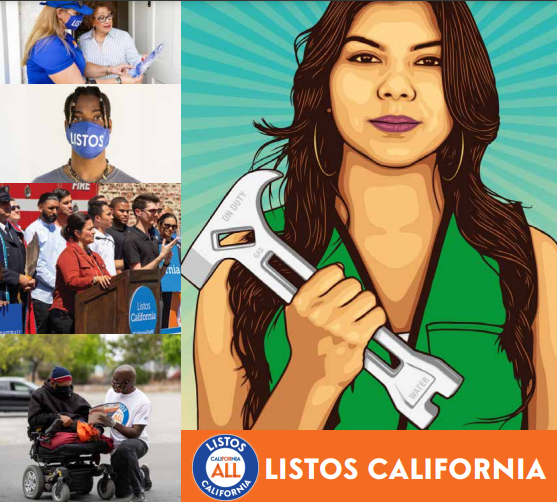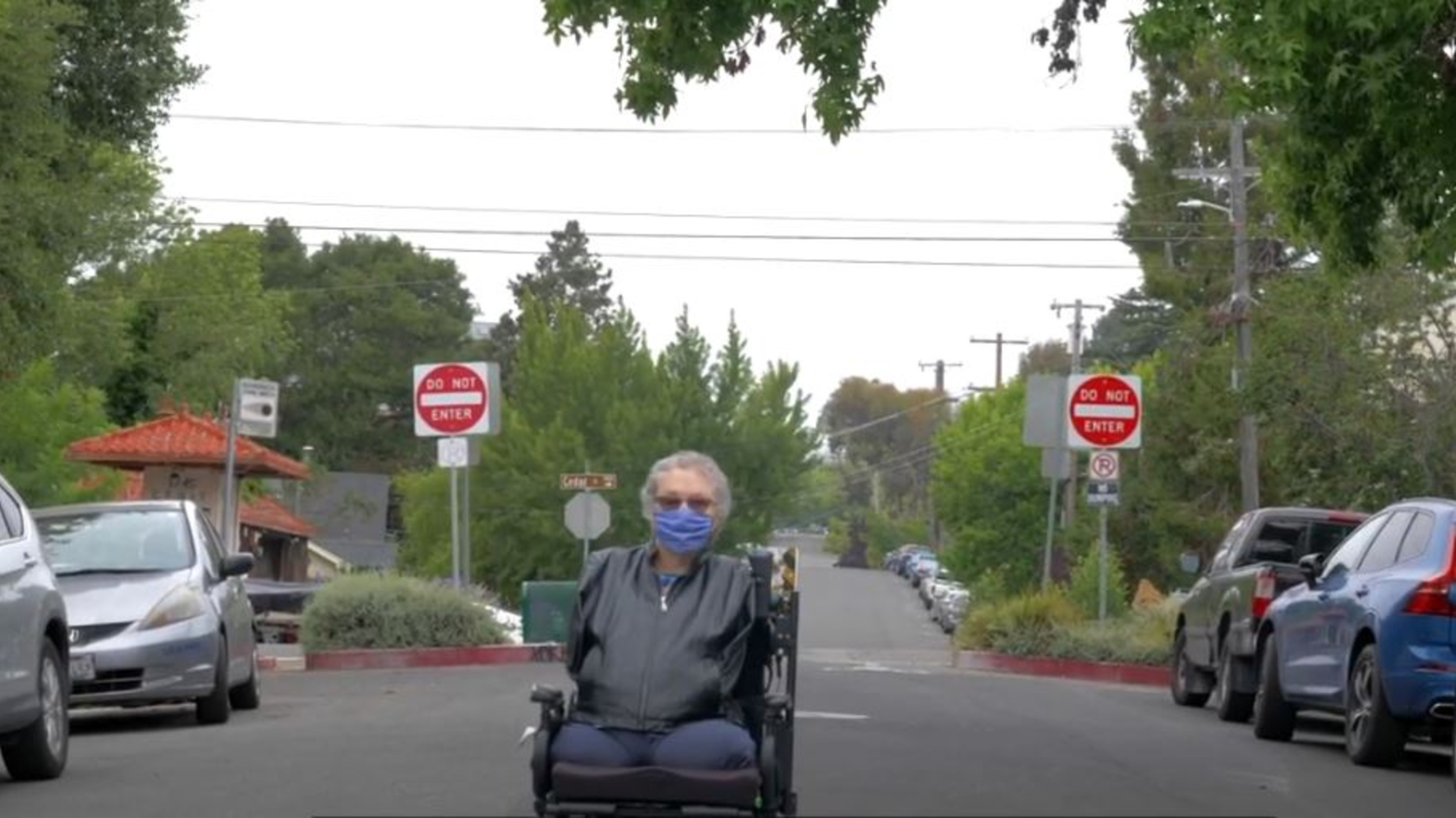Including People with Disabilities in Emergency Planning
Highlights

As part of a statewide campaign in 2020, the Center on Disability at the Public Health Institute engaged residents in three California counties to make emergency preparedness inclusive of people with disabilities, seniors and older adults, and people in poverty. With the onset of the coronavirus pandemic, the Center also connected Californians with disabilities to essential COVID-19 information and resources.
339K disabled and socially vulnerable Californians engaged in emergency preparedness
134K disabled and socially vulnerable residents received COVID-19 information and resources
-
Focus Areas
Disability Rights, Environmental Health -
Issues
Climate Change, Wildfires & Extreme Heat -
Expertise
Health Education & Promotion, Outreach & Dissemination -
Strategic Initiatives
COVID-19, Vaccine Access & Equity
In emergencies like wildfires and earthquakes, people with disabilities face even greater dangers than others. But most emergency preparedness programs fail to address the needs of disabled people, including those with limitations in mobility, stamina, vision or hearing, and those with cognitive or mental health disabilities.
The Center on Disability at the Public Health Institute is filling this gap. In 2020, the Center worked with people with disabilities, seniors and older adults and people in poverty in three California counties to develop inclusive emergency preparedness materials as part of Listos California, a $50 million statewide emergency preparedness informational campaign administered by the Governor’s Office of Emergency Services. Among the Center’s materials is the 4 Steps to Emergency Preparedness for All, a written and online inclusive planning tool to help individuals prepare for emergencies.

For people with disabilities, it is very important to find your trusted allies, note your medical and health needs, make your go-bags, and plan your evacuation ahead of time, so that you can maintain your independence when an emergency hits.Lewis E. Kraus, co-director, Center on Disability
The Center also connected nearly 340,000 people to emergency planning information, including:
- Engaging over 266,000 socially vulnerable people in Alameda County in emergency preparedness, including through online trainings in English, Spanish, Mandarin, and American Sign Language (ASL). Training sessions were hosted by Alameda County Assemblymember Kansen Chu, Assemblymember Rob Bonta, Assemblymember Bill Quirk and County Supervisor Nate Miley, among others.
- In Nevada County, California, the Center’s work reached nearly 30,000 people — more than 50% higher than the original goal. Efforts included organizing a meeting where socially vulnerable populations were able to share their needs with the County Emergency Manager.
- In El Dorado County, the Center’s outreach program reached more than 44,000 people and was the first of the 24 counties in California to meet its goal of engaging socially vulnerable populations in emergency preparedness.

Listos California Impact Report: A People-Centered Movement to Build Disaster Resilience
PHI’s Center on Disability’s work in three California communities is featured in Listos California Impact Report: A People-Centered Movement to Build Disaster Resilience, which highlights successful strategies to support the state’s diverse and most vulnerable populations to prepare for disasters like wildfires, earthquakes and floods, and for public health emergencies like the COVID-19 pandemic.
When the COVID-19 pandemic hit, the Center pivoted to primarily offering online training and resources for the Listos campaign. Working with community-based groups in Alameda County, the Center provided 134 COVID-19 programs to an additional 134,000 people. The Center has also compiled a wealth of national and regional COVID-19 resources for people with disabilities.
The Listos California campaign engaged local leaders to create videos for outreach on emergency planning. The Center and its community partners worked with the civic leaders, including Oakland Mayor Libby Schaaf, Dublin Mayor David Haubert, San Leandro Mayor Pauline Cutter, and Alameda County supervisor Keith Carson, as well as all of the Emergency Managers in Alameda County on including the “4 Steps” approach in the videos.
The Listos California campaign on emergency preparedness in California has produced specific videos for socially vulnerable communities in California. PHI’s Center on Disability contributed to this video that highlights disaster preparedness needs for people with disabilities.

The Listos California campaign on emergency preparedness in California has produced specific videos for socially vulnerable communities in California. PHI’s Center on Disability contributed to this video that highlights disaster preparedness needs for people with disabilities.
Read more about the Center’s work in Alameda County in the Post News article, “Bay Area Community Groups Will Help Get the Word Out About Emergency Planning.”
Work With Us
You change the world. We do the rest. Explore fiscal sponsorship at PHI.
Support Us
Together, we can accelerate our response to public health’s most critical issues.
Find Employment
Begin your career at the Public Health Institute.
